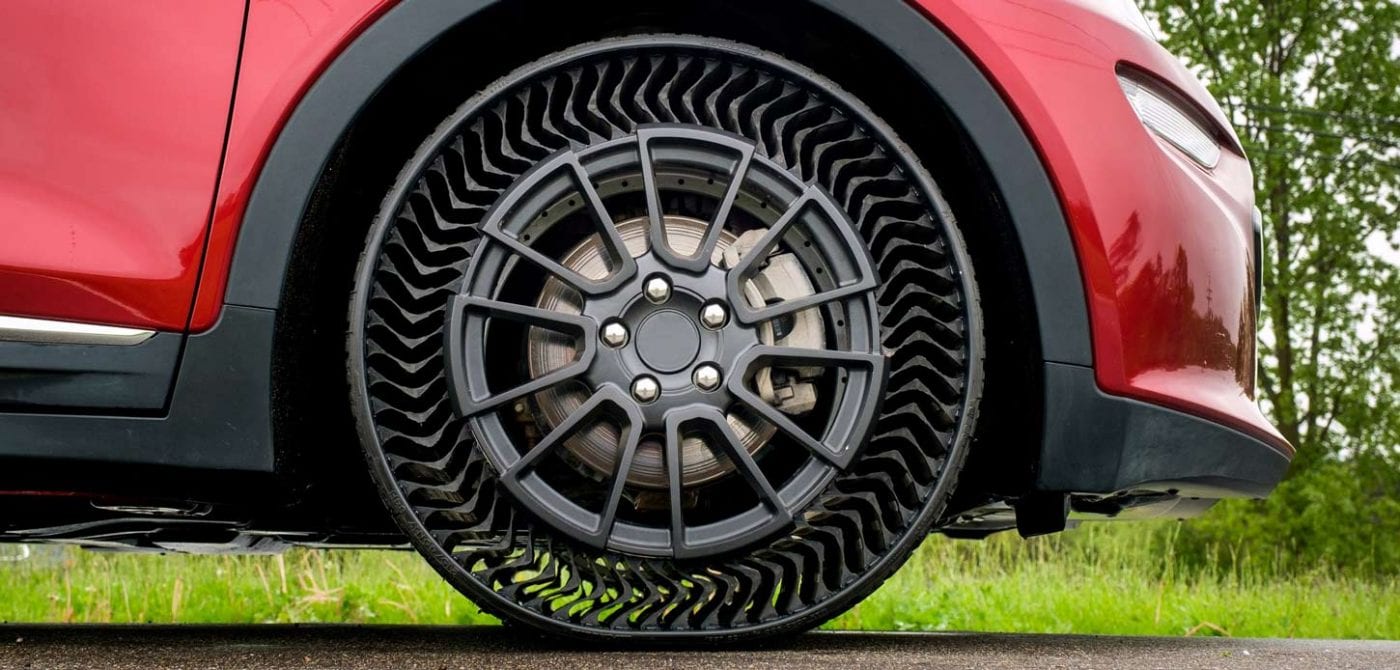Tire manufacturers are currently testing airless wheels and tires that could bring an end to punctures for millions of drivers. For example, Goodyear is using reinforced rubber and plastic spokes to make an airless tire that could replace the traditional air-filled wheels.
Michael Rachita, Goodyear’s senior program manager for non-pneumatic tires, told the BBC: “There will be noise and some vibration. We’re still learning how to soften the ride. But we think you’ll be surprised at the performance.”
There’s a growing need to keep cars on the road with the rise in taxi-hailing apps such as Uber and food delivery services.
Mr. Rachita said: “While air-filled tires will always have their place, a mixture of solutions is needed.
“As we move into a world where autonomous vehicles are becoming more common and many cities are offering transport-as-a-service strategies, having a maintenance-free tire is hugely important.”
Goodyear is testing the new tires for thousands of miles under different conditions every 24 hours. Some of the spokes bend and break but the overall tire structure remains the same.
Mr. Rachita explained: “It’s test-learn, test-learn.
“But we’re at a stage that’s given us a huge amount of confidence. This is the real deal.”
Michelin has also been working on an airless tire made under the company’s Unique Puncture-proof Tire System (Uptis). The tire could be seen on the Chevrolet Bolt as early as 2024.
It is made using high-strength resin embedded with rubber and fiberglass to create a mesh structure wrapped around an aluminum wheel.
Cyrille Roget, a scientific and innovation expert at Michelin told the BBC: “We have 130 years of experience and knowledge in perfecting inflatable structures like pneumatic tires. Airless technology is very recent.”
Michelin plans to make an airless tire that is 3D-printed, connected, and made of materials that can be reused. It would be well-suited for EVs and have zero maintenance. Airless tires tend to have increased drag due to the increased contact with the road.
This increases rolling resistance which demands more energy from the battery to drive the car forward. There’s also a drawback in how much noise the tires produce.
Matt Ross, editor-in-chief of Tire Technology International said: “With engine sound removed on an electric car, tires become the dominant source of the noise.”
In addition, the rigid plastic spokes transmit vibration through the transmission. Initially, airless tires are expected to cost more than traditional tires.


